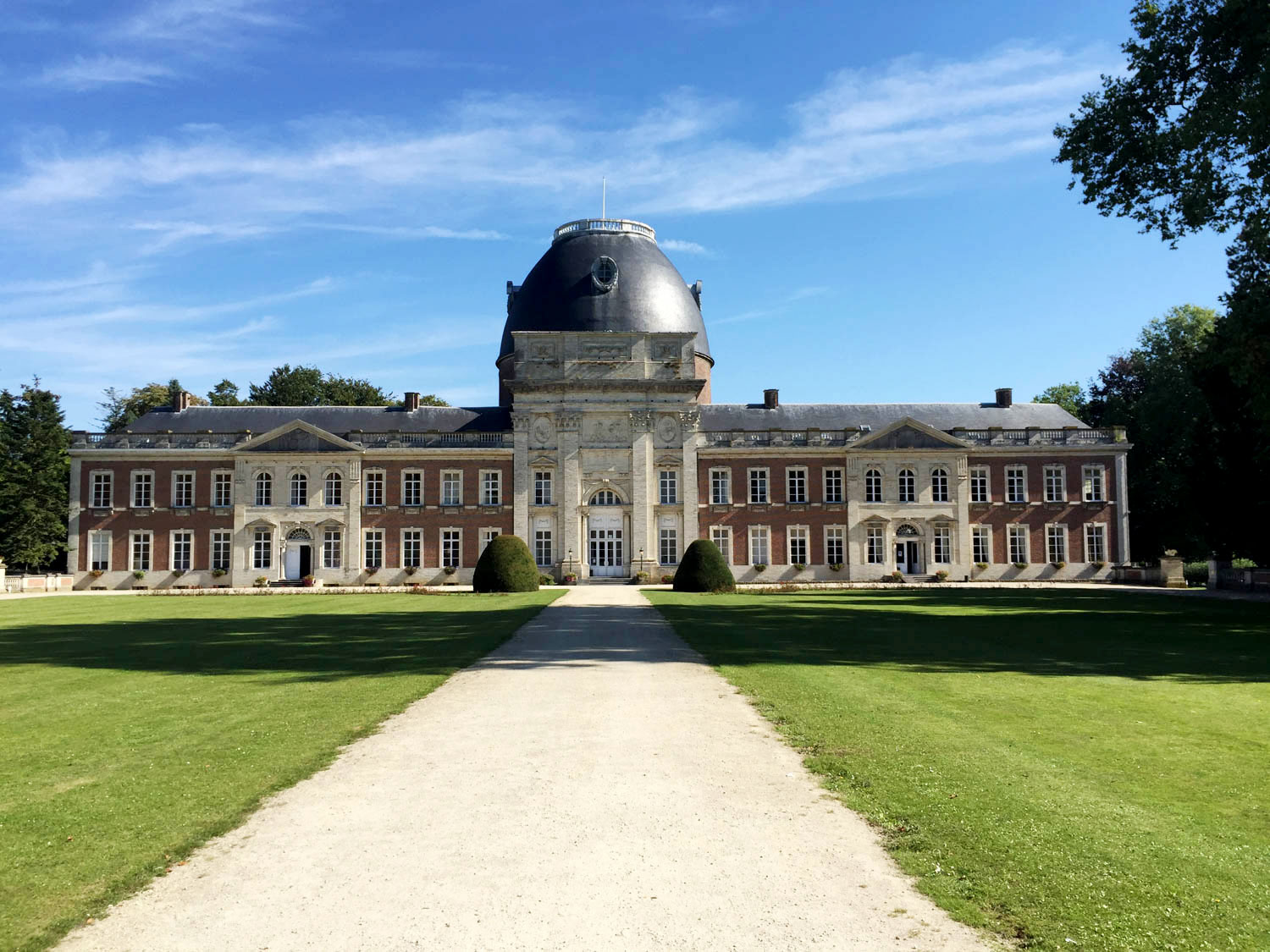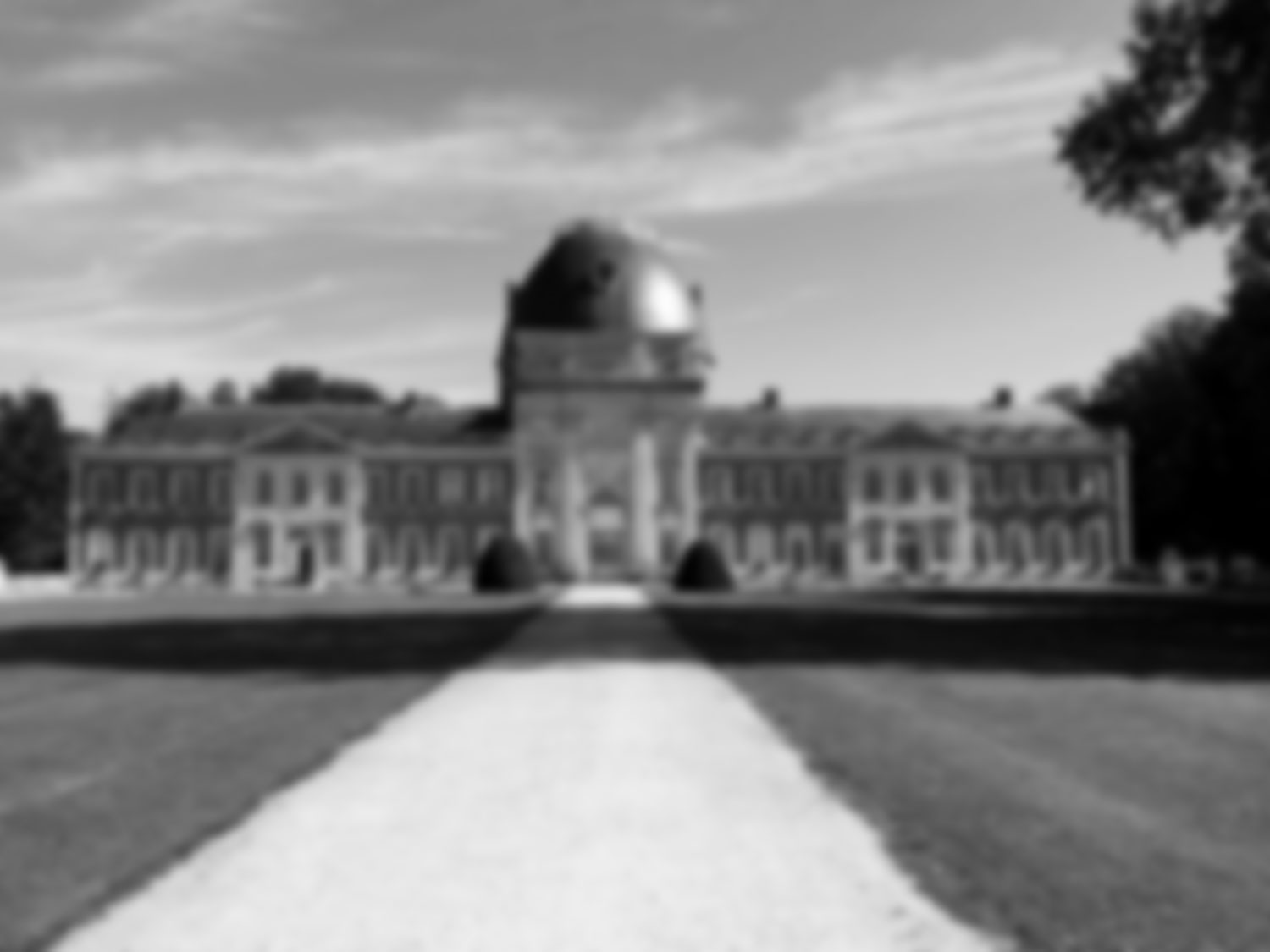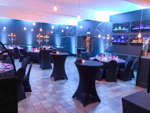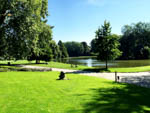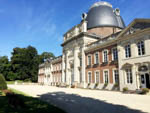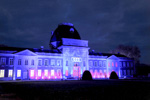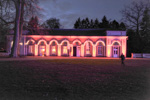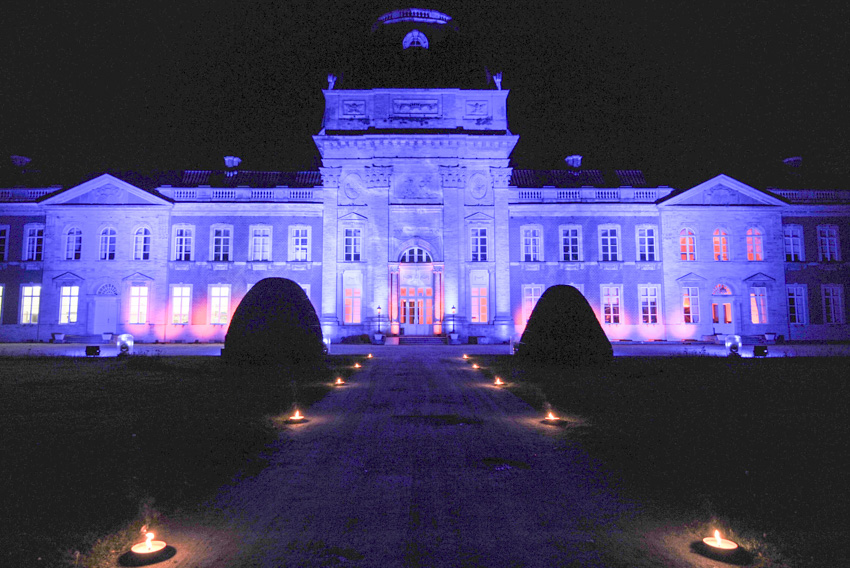
Introduction
Ideally located halfway between Brussels and Liège, in Walloon Brabant, The 18th century, neoclassical castle offers you prestigious facilities for your corporate events and receptions at an exceptional site and in a remarkable green setting.
The Domain, converted into a reception space and conference centre can welcome from 10 to 1,500 guests.
The staterooms, the sumptuous Dome room and the new Orangery are the ideal setting for organising receptions and corporate events.
the 28-hectare park and courtyard of the Castle are ideal for product presentations, team-building activities, family days and other events.
Under the impetus of the Province of Walloon Brabant, the owner of the Domain, a brand new horeca team has been employed to welcome you and support you in the organisation of your events, with the renewed spaces with state-of-the-art equipment, in order to offer you the warmest reception of all types of organisation.
NEWS
Be sure to join the FACEBOOK page of the POP UP BAR HELECINE to be kept up to date of the many activities planned in the coming summer season at the Domain.
THE ROOMS
The Castle and its annexes comprise :






- 28 ha domain for your Team Building events
Option to have receptions under gazebos in the domain.
Numerous combinations are possible
The reception and success of your event will be assured by the staff of the caterer Cocotte & Co, specialised in different areas of event organisation: logistics, technical facilities, décor, artistic proposals, shows, lasers, lighting, etc.
OUR SERVICES
Our staff are also available to help you with the complete organisation of your event if you so wish.
Contact
Château d'Hélécine
2 Rue Armand Dewolf
1357 Hélécine
(Follow the signs « Domaine Provincial Hélécine »)
Hélécine Castle information line: +32 475 492 482
info@chateauhelecine.be
- Coming from
- My location
- Leuven
- Brussels International Airpo
- Liège
- Louvain-La-Neuve
- Wavre
- Namur
- Antwerp
- Charleroi
- Ghent
HISTORY OF THE DOMAIN
THE HEYLISSEM NAME AND THE FIRST INHABITANTS OF THE REGION
The name Heylissem is mentioned for the first time in a charter dating from 29 November 1011 (1) and through which the Bishop of Liège, Baldrick, granted the Church of Heylissem the property called Hamps (today the hamlet of Hampteau). Apart from this, there is little information remaining of the origins and first inhabitants of the region where the Abbey of Heylissem was built. When the monastery was founded in the early 12th century, the local population comprised a mixture the origin of whom remains unknown. We only know that the original inhabitants were a race of man who, at the time of the mammoth and reindeer, lived by hunting along the rivers, in the woods and marshes (2). After this Palaeolithic era, at the dawn of the present geological epoch, a new equally unknown race of man, distinguishable only by their brachycephalic skulls and a way of life revealed to us by archaeologists specialising in prehistory. They practised agriculture, used stone weapons and tools, domesticated animals and made ceramic vases. The first glimmers of history appear with the invasion by the Celts who crossed the Rhine and subdued the population. The use of bronze became widespread. But we have to wait until the arrival of the tribe of the Belgians, around 250 BC, who pushed the Celts further south, to see the first development of settlements. The inhabitants called "Nervians" left gold coins whose workmanship shows a certain level of civilisation.
ROMAN PERIOD
At the time of the invasion of Gaul by the Romans in 57 BC, many men perished, defeated by Caesar's legions. The land suffered the same fate as the other territories in our region: annexation to the Roman Empire for four centuries. There are four tumuli in a countryside close to the road linking Opheylissem to Jodoigne, and today still called "Campagne des Tombes" (Countryside of Graves). The cultivation of the land has however significantly reduced their height. Several foundations of Roman villas were found in the region. The main communication route connecting the Rhine to the sea was not far from there.
THE CHURCH AND THE BARBARIANS
From the second half of the third century, the inhabitants saw tribes of Franks and Alemanni entering their lands as invaders. The military frontier which had, since Caesar, kept the Barbarians on the right bank of the Rhine, was crumbling. New colonization of the region and integration in the Kingdom of Clovis. The fall of the Roman Empire resulted in the retreat of civilisation in all areas. No exact facts have, as yet, been discovered from the Frankish period. What we know is that the Heylissem region was included in the vast frontiers of the Bishopric of Liège (3). The Church, in fact, remembered the good times when its dioceses corresponded to the ancient Roman cities in the country, so it seemed completely natural for it to re-establish these frontiers. The Heylissem territories were therefore encompassed in the boundaries of the Bishop of Liège, thus attracting the benevolence of the prince-bishops of the Cité Ardente for the population. Religious fervour also contributed significantly to extending the territorial system of the Frankish lords. The two hamlets of Heylissem (Opheylissem and Neerheylissem) did not belong to the same pagus (4), the fragmentation of a collection of dwellings which without this principle only made up one, probably dates back to the Frankish period
FROM LOTHAR TO THE DUKES OF BRABANT
In 843, on the death of Charlemagne, the Treaty of Verdun granted the patrimonial domains of Hesbaye, as well as those of Rome and Aix-la-Chapelle, and the title of Emperor, to the elder son, Lothar. This empire was given the name of its sovereign: "Regnum Lotharii" or Lotharingia. The successive partitioning of the properties and subsequent regrouping of the "pagi" around the same count meant that the Heylissem territories were moved politically under the control of the Counts of Louvain and later the Dukes of Brabant.
FOUNDATION OF THE ABBEY
Following the example of many great families of the age and believing that his lineage should not be left behind, René de Zetrud, Lord hesbignon, decided to found an abbey on the banks of the Gette within the allodial property of Cappendael (Chapeauveau) and to bequeath them half the Church of Pellaines. This foundation, approved by Alexandre de Juliers, Bishop of Liège, was confirmed on 3 May 1135 (6) by a Charter of Pope Innocent II as well as on 10 March 1145 (7) by a Bull of Pope Eugene III. Although there is no way to assess the importance of this donation, it must have been a sufficiently large fund to support the small community. Other donations, contributions by the religious authorised to bequeath their property to the abbey where they made their profession of faith, inheritances and purchases successively expanded the scope and substance of the initial foundation. The domain grew considerably towards the end of the 13th century (8) as a result of the purchase of important property belonging to the Lord of Gossoncourt. At the same time the abbot was granted the dispensation of justice at all levels, with the exception of criminal executions.
THE EARLY NORBERTINE COMMUNITY
The first abbot of Heylissem was Ermenric (9), a disciple of Saint-Norbert. The order of the Premonstratensians or Norbertines was founded at Prémontré, near Laon in France, where Norbert founded the parent abbey in the Forest of Coucy. From 1129 to 1796, thirty-eight prelates succeeded Ermenric (10). At first, the community was mixed but this situation did not last long. The General Chapter of the Order having resolved, in 1142 (11), no longer to admit nuns within the men's monasteries, the Norbertine nuns of Heylissem successively moved to live in Stocquoy, near Jodoigne, and then, around 1200, to Seumay where the estate to granted to them by Siger de Wavre. This community was soon extinguished and its property returned to the mother house, on which it depended entirely both temporally and spiritually.
THE ABBEY EXPANDS ITS PATRIMONIUM
During the two first centuries after its foundation, the Heylissem Abbey was mainly concerned with its domain and the enlargement of its patrimonium in order later to consolidate its religious authority (12). These monks, by adopting the rule of life for Premonstratensians, devoted themselves to exercising priestly functions. They received the right to serve many curacies in the areas neighbouring the monastery: Neerwinden, Cumptich, Budingen, Perwez, Bunsbeek, Linsmeau, Pellaines, Roosbeek, Wanghe, Dieghem, Hévillers, Hoeleden, Jauche, Glabbeek, Hautem-Ste-Marguerithe (13). The Abbey lands were extensive and included the farmsteads (14) situated in Breisem, Bunsbeek, Chapeauveau, Kumtich, Jandrain, Seumay, Stocquoy, Budingen and Daussoulx, and many properties situated in over 50 locations in Brabant (15). The monastery also had several mills and a brewery. To support the needs of the community which consisted of priests, clerics and novices, lay brothers bound by vows and oblates who were given to the Abbey either temporarily or for life, agricultural workers and lay brothers, under the direction of some priests, ran the farms, cultivated the land and the vineyards. The funds tied up in the hands of the religious, the many rents and tithes that they were authorised to levy (16), and the jurisdiction they exercised made them lords of the region. If the sciences and letters were never cultivated at Heylissem, the agricultural arts have always held a place of honour.
TRANSFORMATION OF THE DEWEZ BUILDINGS BY BALAT
In 1870, the architect Balat reorganised the buildings and the park into a huge rural estate (29). The operation of the farm, mill and sugar factory continued. Countess Georgine d'Oultremont, wife of the son of Baron van den Bossche, bequeathed the domain to her nephew, Count Albert D'Oultremont in her will dated 14 October 1919. In 1924, Tienen Sugar Refinery bought the machinery from the sugar factory to transfer them to Tienen. Count Albert d'Oultremont passed away Opheylissem Castle on 6 August 1946, and left his wife Madame Marguerite, Countess d'Oultremont-van de Werve and his eight children as his heirs. On 23 March 1962, the Provincial Council of Brabant decided to purchase the domain and Opheylissem Castle and to use them for cultural and youth activities.
THE MILITARY ROLE OF THE ABBEY OF HEYLISSEM
Heylissem Abbey, situated on the border of the States of the Duchy of Brabant, on the side of Hesbaye, particularly held the attention of the Dukes of Brabant who ensured its protection and somewhat assigned it the role of an advanced fortress. Both the monastery and the property surrounding it were subject to bloody and fierce battles on several occasions. John I, who acceded to power in 1261, wanting to take the Duchy of Limburg, where the succession was uncertain due to the death of Duchess Ermengarde, quickly found a pretext to start the conquest (17). A coalition of other pretenders, comprising Reginald I, Count of Guelders, Siegfried II of Westerburg, the Archbishop of Cologne and Henry IV of Luxembourg, immediately made a stand against the ambitious Duke of Brabant. The Brabantan Cavalry, the militia of Louvain, Brussels, Antwerp, Jodoigne and Nivelles, the troops of Liège, Cleves and Juliers fought under Duke John's banner and passing by Heylissem, together marched against the coalition forces. The battle took place in Worringen on 5 June 1288. The Brabantans, led by their Duke, although outnumbered compensated for this with more skilful tactics. The Duchy of Limburg was thus annexed to the Brabant Crown. As a privilege, his son, John II, allowed the diversion of the Noduwez river to the abbey mill and commissioned large works to surround the monastery with a vast enclosure (18). He also plotted and straightened the roads around the domain. A short time after the completion of the work, Duke John III had the opportunity to use the abbey as a fortress. In 1332, threatened by a formidable coalition of troops led by the King of Bohemia, John the Blind, Jean III gathered his armies at Heylissem. They stayed there for nearly two weeks during which the rain did not stop which prevented him from attacking his enemies. During his stay, he was knighted in the monastery chapel in the presence of his troops.
CONFLICTS WITH THE DUKES OF BURGUNDY
The Dukes of Brabant were happy to surround themselves with abbots as advisers. Numerous notes, charters and letters bear witness to the relationship that existed between the Court and the Abbey (19). In the Burgundian period, Heylissem Abbey, imbued with its importance and the influence it exercised around it, did not hesitate, on several occasions, to enter into an open struggle with the Dukes of Burgundy. Very jealous of its prerogatives and immunities, it obstinately, and most often successfully, defended them.
16TH AND 17TH CENTURIES: PILLAGING AND FIRES
The abbey buildings burned down during the war of 1507, were luxuriously rebuilt by the Abbot Vandermolen (20). The religious troubles during the Dutch Revolt were also disastrous for the abbey: the church, refectory, dormitory and abbot's house were burned down on 27 November 1568 during the invasion of Brabant by the Prince of Orange. The monks dispersed and some went to live in Liège, others at the Langwaden Priory. In 1635 (21), after the reconstruction of the abbey, the Franco-Dutch army encamped near Heylissem. The Prince of Orange, Federick Henry Nassau, held his headquarters in the abbey while his troops attached and burned Tienen. The abbey was soon rebuilt from its ruins for the third time: the church and monastic buildings were rebuilt in the Renaissance style. On 29 July 1693, at the first battle of Neerwinden, the French, under the orders of the Marshal of Luxembourg, were only victorious over the allied troops commanded by William III, King of England after suffering enormous losses. They extracted vengeance by pillaging and ravaging the whole neighbouring countryside, and in particular Heylissem Abbey (22). On 12,13 and 14 August 1693, the army ransacked the buildings and stropped the monks of all they possessed.


